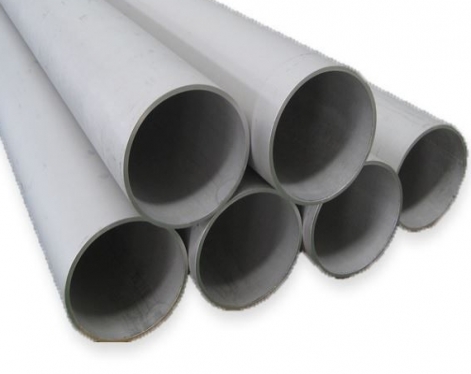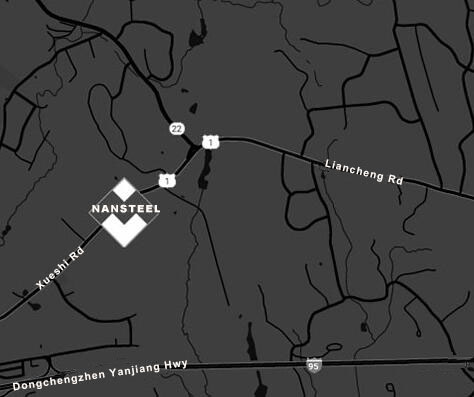Simply put, "non-standard" refers to non-conformity with national standards (GB), industry standards or other general standards. The following carefully summarizes the meaning, characteristics, applications and matters needing attention of non-standard seamless steel pipes:
Definition of non-standard seamless steel pipe
Seamless steel pipe is relative to welded steel pipe. It is made of a whole piece of metal without welds on the surface. "Non-standard seamless steel pipe" refers to its size, material, performance and other aspects that do not meet any existing public standards (such as GB/T 8162 "Seamless Steel Pipe for Structure", GB/T 8163 "Seamless Steel Pipe for Transporting Fluids", API 5L "Pipeline Steel Pipe Specification", etc.).

Characteristics of non-standard seamless steel pipes
Special size: The most common non-standard is the non-standard size, such as the outer diameter, wall thickness, length, etc., which are beyond or less than the range specified by the standard. Some engineering projects may require steel pipes of unconventional sizes, and then non-standard products need to be customized.
Special materials: Some projects may require the use of alloy steel with special composition, or have special requirements for the content of certain elements, which also fall into the non-standard category.
Special performance: For example, the requirements for mechanical properties (tensile strength, yield strength, elongation, etc.) and chemical properties (corrosion resistance, high temperature resistance, etc.) exceed the standards.
Special use: Used for some unconventional purposes, which are not clearly specified in the standard specifications.
Application of non-standard seamless steel pipe
Non-standard seamless steel pipes are mainly used in the following situations:
Special engineering projects: Some large projects or special equipment require the use of steel pipes with unconventional sizes or properties.
Special engineering projects: Some large projects or special equipment require the use of steel pipes with unconventional sizes or properties.
Equipment repair and modification: When repairing or modifying some old equipment, it may be necessary to use non-standard steel pipes that are the same or similar to the original equipment.
Small batch customization: Some small batch, customized products or equipment may require the use of non-standard steel pipes.
Tests and Research: When conducting material or process tests and research, it may be necessary to use non-standard steel pipes with special composition or properties.
Things to note when ordering non-standard seamless steel pipes
Clarify technical requirements: When ordering non-standard seamless steel pipes, be sure to provide suppliers with detailed technical requirements, including size, material, mechanical properties, chemical composition, surface treatment, etc. It is best to provide drawings or technical specifications.
Choose a qualified supplier: Choose an experienced and technically strong supplier (Nansteel Manufacturing Co., Ltd) to ensure product quality.
Sign a detailed contract: Specify the product's technical requirements, delivery date, acceptance criteria, after-sales service, etc. in the contract to protect your own rights and interests.
Strict quality inspection: After receiving the goods, strict quality inspection is carried out to ensure that the products meet the requirements.
Implementation standards: Even for non-standard products, relevant standards should be referred to as much as possible. For example, in terms of mechanical properties, chemical composition, etc., the requirements should be as close to or higher than those of relevant standards as possible to ensure product quality and safety.
How to distinguish between non-standard and national standards
Check standards: By checking relevant national standards, industry standards or international standards, you can determine whether the size, material and performance of the steel pipe meet the standard requirements.
Check the product label: Regular steel pipe products are usually marked on the surface, indicating their material, specifications, implementation standards and other information.
Consult professionals: If you are unable to judge on your own, you can consult a professional seamless steel pipe manufacturer or testing agency.
Read more: What are the Main Export Markets for Seamless Steel Pipes?
Definition of non-standard seamless steel pipe
Seamless steel pipe is relative to welded steel pipe. It is made of a whole piece of metal without welds on the surface. "Non-standard seamless steel pipe" refers to its size, material, performance and other aspects that do not meet any existing public standards (such as GB/T 8162 "Seamless Steel Pipe for Structure", GB/T 8163 "Seamless Steel Pipe for Transporting Fluids", API 5L "Pipeline Steel Pipe Specification", etc.).

Characteristics of non-standard seamless steel pipes
Special size: The most common non-standard is the non-standard size, such as the outer diameter, wall thickness, length, etc., which are beyond or less than the range specified by the standard. Some engineering projects may require steel pipes of unconventional sizes, and then non-standard products need to be customized.
Special materials: Some projects may require the use of alloy steel with special composition, or have special requirements for the content of certain elements, which also fall into the non-standard category.
Special performance: For example, the requirements for mechanical properties (tensile strength, yield strength, elongation, etc.) and chemical properties (corrosion resistance, high temperature resistance, etc.) exceed the standards.
Special use: Used for some unconventional purposes, which are not clearly specified in the standard specifications.
Application of non-standard seamless steel pipe
Non-standard seamless steel pipes are mainly used in the following situations:
Special engineering projects: Some large projects or special equipment require the use of steel pipes with unconventional sizes or properties.
Special engineering projects: Some large projects or special equipment require the use of steel pipes with unconventional sizes or properties.
Equipment repair and modification: When repairing or modifying some old equipment, it may be necessary to use non-standard steel pipes that are the same or similar to the original equipment.
Small batch customization: Some small batch, customized products or equipment may require the use of non-standard steel pipes.
Tests and Research: When conducting material or process tests and research, it may be necessary to use non-standard steel pipes with special composition or properties.
Things to note when ordering non-standard seamless steel pipes
Clarify technical requirements: When ordering non-standard seamless steel pipes, be sure to provide suppliers with detailed technical requirements, including size, material, mechanical properties, chemical composition, surface treatment, etc. It is best to provide drawings or technical specifications.
Choose a qualified supplier: Choose an experienced and technically strong supplier (Nansteel Manufacturing Co., Ltd) to ensure product quality.
Sign a detailed contract: Specify the product's technical requirements, delivery date, acceptance criteria, after-sales service, etc. in the contract to protect your own rights and interests.
Strict quality inspection: After receiving the goods, strict quality inspection is carried out to ensure that the products meet the requirements.
Implementation standards: Even for non-standard products, relevant standards should be referred to as much as possible. For example, in terms of mechanical properties, chemical composition, etc., the requirements should be as close to or higher than those of relevant standards as possible to ensure product quality and safety.
How to distinguish between non-standard and national standards
Check standards: By checking relevant national standards, industry standards or international standards, you can determine whether the size, material and performance of the steel pipe meet the standard requirements.
Check the product label: Regular steel pipe products are usually marked on the surface, indicating their material, specifications, implementation standards and other information.
Consult professionals: If you are unable to judge on your own, you can consult a professional seamless steel pipe manufacturer or testing agency.
Read more: What are the Main Export Markets for Seamless Steel Pipes?









